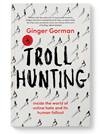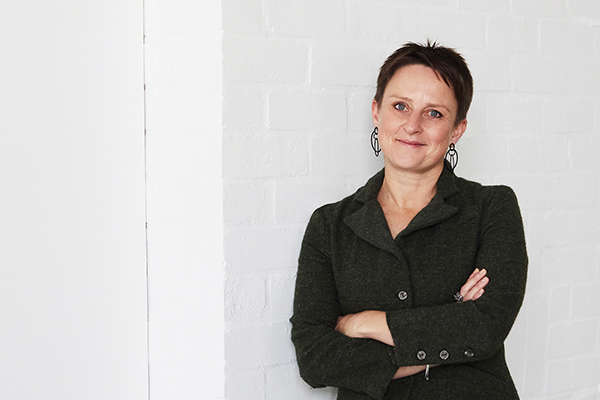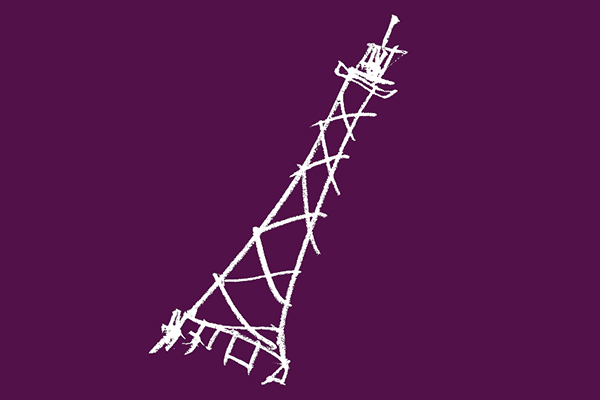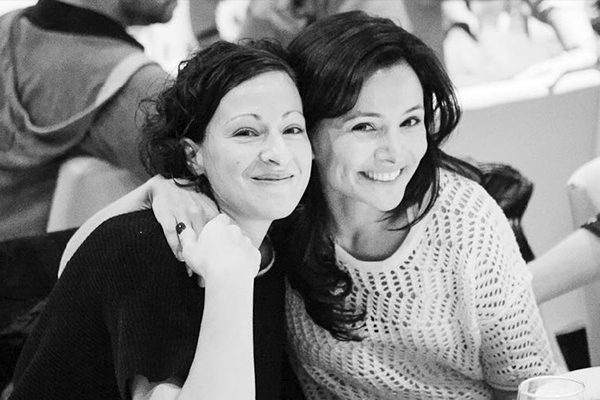Misogyny on the internet
4 Mar 2020 | Ginger Gorman
Troll Hunting by Ginger Gorman is a window into not just the mindset of internet trolls, but also the profound changes in the way we live and work in a post-internet world. Internet trolls didn’t appear from thin air – they are real people, and reflect a real aspect of our society. Trolling also happens disproportionately to women, especially women of colour. Read the below extract to find out more about misogyny on the internet.
On 8 August 2018 I appeared on Stan Grant’s ABC TV program Matter of Fact, to discuss free-speech absolutism. A few days earlier far-right nationalist Blair Cottrell had appeared on twenty-four-hour news channel Sky, spruiking his views on immigration. As someone who had previously expressed fervent anti-Jewish, anti-Islam, anti-woman and pro-Nazi views, his appearance on mainstream TV sparked widespread public debate over whether extremists should be legitimised by being given a public platform.1
In the process of writing this book, I’d given substantial thought to the hazy perimeters of free speech, so it stood to reason that I had some things to say on the topic. When Grant’s show aired, I received a tweet that didn’t engage with my arguments, but instead attacked the way my face looked:
You look like an actual hook-nosed goblin.2
(Perhaps a young white male offended that a woman had a voice and was using it. I’m not stereotyping – this is what trolling research points to, so call it an educated guess.3)
I wish this was an anomaly. This happens pretty much every time I go on television. I’m not alone. Julia Baird – who hosts The Drum on the ABC – acknowledges the impact of this type of vitriol in a Twitter message to me: ‘Some women are so badly trolled when they come on television that they are reluctant to appear at all on shows like The Drum and Q&A.’
As a case in point, Shen Narayanasamy, Human Rights Campaign Director for the left-wing lobby group GetUp, declared on The Drum in July 2018: ‘It’s just dangerous for me to be on Twitter. I would get so much abuse it would be pointless.’
She went on to say that right then – as the show aired that night – her staff were staying back in GetUp’s office to block all the cyberhate as it rolled in. The aim was to sort the problem out then and there so that they didn’t have to trawl through reams of abuse at the start of the working day the following morning. Narayanasamy referred to being a person of colour and wearing a headscarf and pointedly asked, ‘Why is it that my coming on this panel, and having a voice that’s coming out of my mouth, [is] such a threat to so many people?’
Women, she said, were often afraid to say anything publicly because of the harassment they receive: ‘We’ve got to acknowledge, already, that the way public debate is shaping actively silences at least half the population.’4
She’s right. If you combine gender with being a person of colour, the situation looks grim. A US study of nearly 974 undergraduate students in 2009 found that ‘the group that experienced the most cyberstalking victimization was non-white females, with 53.2 percent of this group experiencing some form of cyberstalking during their lives.’
In case you’re curious about how this compares with other groups, the paper goes on to say, ‘The next most frequently victimized group was white females with 45.4 percent of white females experiencing cyberstalking. Nonwhite males were the next most victimized group at 40 percent, followed by white males at 31 percent.’5 Make no mistake. Predator trolling in this context is essentially a tool that is used to delegitimise the voices of women and their expertise.
English columnist and author Laurie Penny has written extensively about sexism and the internet. She homes in on the way outspoken women – just like Dawson and Badham and Narayanasamy – are attacked online:
Trashing is insidious. It can damage its subject for life, personally and professionally. Whether or not people sympathize, the damage has been done. It doesn’t matter if the attacks have any basis in truth: What matters is that she is difficult. This woman who doesn’t have the sense to protect herself from public shaming by piping down, by walking with her eyes lowered … In the 1970s, trashing had to be done with analog tools. Today, it is faster, harder, more savagely intimate.6
And it’s not just outspoken women, either. In 2017 Amnesty International surveyed 4000 women across eight countries. Nearly a quarter of those women had experienced online abuse or harassment.7 (The UN Broadband Commission put this figure much higher, stating ‘[A]lmost three quarters of women online have been exposed to some form of cyber violence.’8) From there, Amnesty found that more than ‘three quarters (76 percent) of women who experienced abuse or harassment on a social media platform made changes to how they use the platform’. Some of those women who were abused online ‘said they’d stopped posting content that expressed their opinion on certain issues’.9
When it comes to the chilling effect of cyberhate, some of us are certainly feeling the cold more than others. British research from 2014 found that female journalists and TV presenters receive three times the abuse of their male counterparts.10
As female journalists, we often get the sense that we’re copping a tsunami of hate. And although we know male colleagues cop hate too, it’s hard not to feel they are dealing with a comparative trickle. Well. It turns out this is not just a feeling. It’s backed up by data and research. In Amnesty International’s major Toxic Twitter report, Dunja Mijatović, former Organization for Security and Co-operation in Europe Representative on Freedom of the Media, submits that ‘the severity, in terms of both sheer amount and content of abuse, including sexist and misogynistic vitriol, is much more extreme for female journalists’.11
Effectively, then, women in the media are frequently operating in unsafe workplaces. While giving evidence at Australian Senate hearings into cyberbullying in 2018, Maurice Blackburn Lawyers argued that for journalists and other employees who are required to be online as part of their work there ought to be ‘enforceable sanctions against employers who fail in their duty of care to provide a safe workplace for their employees’.12
The way Badham sees it, ‘You have generations of men who have grown up with an expectation of advantage who don’t have it anymore. And that displacement in status … has made a lot of ordinary people very angry.’
More specifically, Badham believes men attack her online because of what she’s writing about. ‘Where trolling got really, really bad for me was obviously when I started writing for The Guardian. I wrote about class, I wrote about economics, I wrote about industrial relations, I wrote about politics and I wrote about the tax system.
‘The things that I’m interested in talking about are traditionally seen as male preserves. For a lot of men, it’s a disconnect to see women articulating on those issues and women having insight and, God help us, expertise. It is terrifying to them, and like any scared animal, they fight with claws and stings.’
A report from the Association for Progressive Communications and developmental aid organisation Hivos underscores Badham’s experience: ‘Prominent women bloggers, journalists and leaders are regularly subjected to online abuse and violent threats that attack their sexuality and right to express an opinion, especially when it is related to fields where men have traditionally been held as experts, such as gaming, politics and technology.’13
Trying to get Badham fired seems to have become an ongoing hobby for her trolls. In 2015 they fabricated a claim that she’d bashed up an old man at a rally. The Guardian’s opinion editor, Gabrielle Jackson, recalls the incident – and a number of similar occasions. ‘Of course, The Guardian investigates these accusations but it was pretty easy to find out that this was a baseless claim,’ she tells me. ‘The abuse I’ve seen directed towards Van Badham is obscene and out of all proportion. There are few people I’ve seen this amount of vitriol directed towards, it’s usually women, and, more commonly, women of colour.’
Some social media platforms appear to be working towards solutions. Facebook, to its credit, recognised the stream of abuse being received by female journalists via private messages. Reporters asked the platform if they were able to publicly share the abuse – something that would normally violate Facebook’s privacy policies. ‘[I]n response to feedback that the sharing of these messages could help stop this type of harassment,’ Facebook told recent Senate hearings into cyberbullying, ‘we made an exception to allow the sharing of screenshots when done to bear witness to the harassment experienced (provided that it was done in a way that was not itself harassing).’14
It’s not all positive, though. According to Facebook, all posts must comply with their ‘Community Standards’. Broadly speaking, these policies govern safety on the platform. So far so good. The issue – when I first started writing this book – was that Facebook’s bullying policies, which run alongside the Community Standards, did not apply to public figures. Journalists are considered public figures. Facebook’s rationale was that the company wants ‘to allow discourse, which often includes critical discussion of people who are featured in the news or who have a large public audience’.15 This might be a lofty democratic ideal but in the face of disproportionate attacks on female journalists, the policy effectively skewed against women in the media.
Sherele Moody is one of these women. She’s a journalist and founder of the Red Heart Campaign, which aims to raise awareness about violence against women and children. This activism makes her the target of relentless misogynistic and homophobic predator trolling from ‘people who think I needlessly highlight male violence’. Most of it starts on Facebook – but it does not stay online.
‘The trolls often post my photos on their socials, making comments about my looks, my sexuality and my gender,’ Moody says. ‘One even implied I had sex with my dog … There is a real undercurrent of hating women in it. The attacks are personal and often centred around me being female. For example, the language they use – rape threats or jokes about my appearance – would never be used if they were having this discussion with other guys.’
As a demonstration of this, Moody sends me a screenshot of a meme made by one of her misogynist trolls. Underneath a photo of her pixie-like face the text reads: ‘Man hating feminist or teenage boy who works at Coles? You decide!’
Misogynistic abuse is one thing. But what’s terrifying in Moody’s story is just how far the trolls will go to hurt her. Despite being a silent voter, they know where she lives. And despite the security features installed in her home, they’ve found their way onto her property. ‘About twelve months ago my Great Dane, Reuben, was poisoned with some sort of acid. The chemical melted the flesh on his mouth, tongue and throat. I was extremely lucky not to lose him. I do not know who did it and no one has been charged but I have no doubt it was someone that I’ve pissed off online.
‘On Sunday night my horse, Frank, disappeared from his paddock. On Monday evening an unknown bloke left a message on my message bank saying the horse had been sent to the glue factory. Frank is still missing. He has been reported stolen and I sent photos of him and his brands to the knackery, in the hope that he won’t be killed if that is where he is,’ she says. ‘There is nothing that is off limits to these people. Nothing.’
A few days later Moody tells me that Frank was found dead in thick scrub. She can’t make herself believe someone has killed him on purpose: ‘We don’t know if it was deliberate or accidental. We will bury him this morning in his paddock.’
It’s not just her personal life that’s affected by predator trolling but her ability to run the Red Heart Campaign. Aside from flat-out abuse and threats, the men’s rights trolls employ a particular tactic with Moody that gets her temporarily banned from Facebook over and over again. She tells me this has happened at least fifteen times.
‘Basically, a group of people calling themselves anti-feminists encourage people to mass-report my page, personal and public, [including] all the comments I make as well as the comments made by my friends,’ she says. ‘The aim is to trick Facebook into shutting down myself and people connected to me. In one week I had six bans – and five of them related to me highlighting male violence and one related to homophobia.’
Moody believes trolls are gaming the system: ‘The use of the Facebook hate speech reporting process is a really effective way to silence women who speak openly about issues such as gendered violence.’
Although Facebook’s media team has talked Moody through their reporting processes and worked with her to get some of the bans over-turned, she’s still frustrated: ‘This has been going on for more than two years, so nothing has actually changed,’ she says.
In my seemingly endless email correspondence with Facebook’s public relations department, they acknowledge they have been working closely with Moody. The email to me states ‘on background’ (which means I can use the information but can’t attribute it to anyone or quote it directly) that the company makes decisions about whether to remove a piece of content based on its Community Standards and not the number of times it’s reported.16 The email also points me to brand-new bullying policies, posted by Facebook’s Global Head of Safety, Antigone Davis, just the day before.17 ‘[S]evere attacks that directly engage a public figure will not be allowed under the new policy,’ she states.
We’ll just have to wait and watch as to how those changes play out and whether they make a real difference to someone like Moody. Perhaps some of us would consider giving up our advocacy after sustaining such damage to our lives as a result of it. Yet for Moody, her fight against gendered violence is personal. She’s a survivor of parental abuse. And, quite aside from that horror, her stepfather was also a murderer and a rapist.18 ‘It really distresses me that people put so much hate and vitriol into shutting me down instead of using that anger to shut down violent men.’
For days I can’t stop thinking about Moody’s dead horse. I write and ask how she’s going.
‘The man who brought him back to our place and dug his grave made a heart-shaped mound over him. At least he is home,’ Moody writes back.
My instinct is to latch on to this show of compassion – from a man to a woman – in the sea of hate. Yet as I read through endless online chatlogs related to trolling, over many months, hope fades.
#
From my research into the notorious troll weev, I have screenshots of IRC chats from December 2011. He seems to be relaying a violent sexual fantasy about sodomising a woman who is crying: ‘Her makeup gets all over the blanket.’ What women really want, weev says in this stomach-churning rant, ‘is to be pinned down and viciously fucked and raped like the whores they are’.
‘Women should be beaten. If a woman gets out of line, hit her til she falls to the floor and kick her in the stomach,’ weev writes.
(Bizarrely, in the same IRC session weev repeatedly mentions watching My Little Ponies videos. When I try to ask him about this via Skype chat, he ignores me.)
I mention this IRC exchange to Meepsheep, who has known weev for a long time. ‘All this stuff about punching and raping women is making me ill,’ I write.
He sends back a virtual shrug: ‘He says a lot of that kind of stuff. I guess when you’re interacting on IRC you just get used to it.’
Not long afterwards, I read an article by Newsweek journalist Michael Edison Hayden about the deep-rooted misogyny within the alt-right. ‘The alt-right movement – which critics suggest is merely a rebrand of an older white supremacist ideology – has struggled mightily to recruit white women to their cause in part because of the abusive rhetoric and actions of movement leaders, analysts suggest,’ Edison Hayden writes. Referring to an incident where prominent Neo-Nazi Matthew Heimbach was arrested on charges of domestic battery, the journalist continues, ‘The alleged incident with Heimbach is not an isolated one – either in terms of his own violence toward women or the way in which women who are close to the movement are treated on the whole.’19
And I wonder then about the men who created the internet all those decades ago. How they believed in the great democratisation of knowledge and envisaged a worldwide web that would connect us all and give us a voice.20 Certainly, they were visionaries. But how far could they actually see? Did they really understand what it would mean? That those motivated by hate and fear would effectively be handed megaphones for the endless amplification of their prejudice. That this would create the modern version of the Salem witch trials every day of the week.
This is an extract from Troll Hunting by Ginger Gorman
Available now in all good bookstores
Click here to find your preferred online retailer




